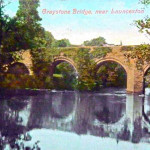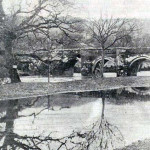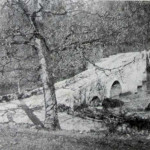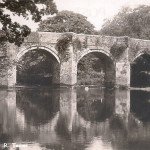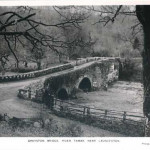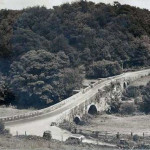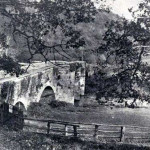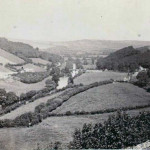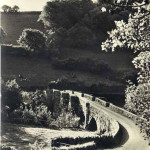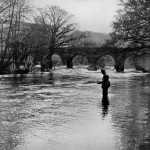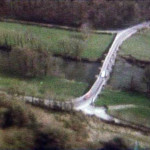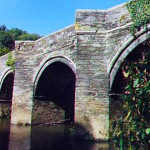.

Greystone Bridge was built under an indulgence of 40 days granted to all penitents by Bishop Lacy on 27th December 1439. The Rev Mr Jones states in his history of Bradstone, of which he was the rector: “Greystone Bridge is a structure of six or seven arches and connects this parish with Lezant in Cornwall. This bridge was built by John Palmer, MP for Launceston in the reigns of Henry V and Henry VI”.
It’s the furthest upstream of three ancient crossing points on the River Tamar and carries traffic using the roads between Launceston in Cornwall and Tavistock in Devon.
The other two ancient crossings are those at Horsebridge and Gunnislake. It is likely that Greystone Bridge and Horse Bridge were the work of the same builder. Both are constructed of local stone with freestone dressings. The patron of these bridges may have been one of the Abbots of Tavistock, who owned large estates between the two.
Greystone Bridge has six semicircular arches of 7m span and two 4.3m flood arches. The road width is only 3m but the cut waters, which project from the piers into the river flow, extend 8.2m up from the river bed to parapet level, providing safe havens for pedestrians.
The arches over the flood plain have possibly been rebuilt. The moulded string above looses its mitred corners where it changes level. Henderson in 1928 only described 2 flood arches. The roadway over the bridge is 10 feet wide. The parapets are splayed on the east and west. Approaches to the bridge were formerly considerably steeper and were altered for the stagecoach between Tavistock and Launceston.
Greystone Bridge featured in the film “The Foreman Went To France”; a model of the bridge was blown up to replicate one scene in the film causing half of Plymouth to visit the site.
Visits: 505


